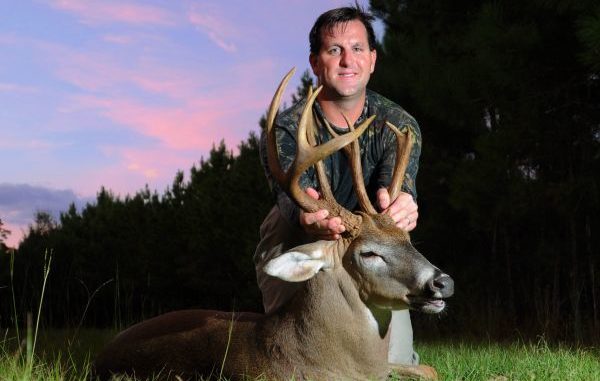
Science doesn’t support idea of ‘inferior’ bucks
The morning is crisp and clear, with an almost imperceptible breeze — in short, a wonderful day to spend in a deer stand.
About an hour after dawn, a doe slides down the trail you’re watching, and a few minutes behind her there’s a buck. You can make out decent-sized main beams when the deer is 100 yards away, and by the shape of its body and horns you figure there’s a good chance it’s a shooter.
But when the buck gets within 50 yards, easing along the same trail the doe used, something doesn’t look right. Getting it in the scope, you realize it’s got four points on his left beam but his right beam is just a long spike.
You have about 30 seconds to ask and answer this question: “Do I kill him or not?”
When it happened to me three years ago, my answer was, “No.”
Here’s why.
The subject of culling bucks thought to be inferior in a local herd is one hunters talk a lot about. If you take out an inferior buck, the thought process goes, it won’t be able to father any fawns that will grow up to be inferior bucks.
But, according to most wildlife biologists, such culling is not worth the effort.
“Age is the most-critical thing we have, as far as improving the quality of bucks killed,” N.C. Wildlife Resources Commission deer biologist Evan Stanford said. “Too many hunters focus on genetics; that’s the factor they really have the least control over.”
The first problem with culling bucks is that a buck contributes only half of a fawn’s genetic makeup — the doe puts in the other half.
Biologists have identified four antler characteristics passed down from parents: the number of points, a rack’s mass, the spread between the antlers and the conformation of the antlers.
So a big, beautiful 10-pointer might be the product of a super doe and an average buck — instead of the other way around.
“There was a study on the King Ranch (in Texas) where they killed deer from a helicopter,” Stanford said. “They tried to quantify what antler traits were desirable, and they picked individual bucks to take out — the ones that didn’t meet their antler qualifications. After a couple of years, they compared the ‘new’ herd with a herd in an area that was not thinned of ‘inferior’ bucks, and they couldn’t define any difference.
“It’s been documented that you can have a doe fawn from a line of big bucks, and she’ll pass those genetics on to future bucks the same way the bucks do. Hunters always talk only about the buck’s contribution, but you have the doe segment of the herd — and there’s no way to manage for that high a percentage of the population.”
Also, genetics might not be the reason a buck sports a subpar set of antlers in a particular season.
“When a hunter takes a ‘cull’ buck, a lot of times it’s because the buck has one side of his rack messed up,” Stanford said. “I tell them, ‘You don’t know what caused it.’
“Deer can go through periods of bad health — disease or injury — and it may affect their antlers that year, but the next year the deer will be completely recovered. If a deer has an injury to one of its pedicles (the spots from which the antlers grow), it can affect that side, and we’ve learned that a certain bacterial infection can affect a deer’s antlers for a year or two, and then he’ll be fine and grow a better rack.”
Two studies from Auburn University support Stanford’s views.
In the first, 70 percent of the bucks with “malformed” antlers in a study herd had suffered some sort of wound or leg fracture. The next study indicated that 50 percent of deer with mismatched antlers had an injury to the pedicle.
The study further indicated that subsequent set of antlers grew normally.


